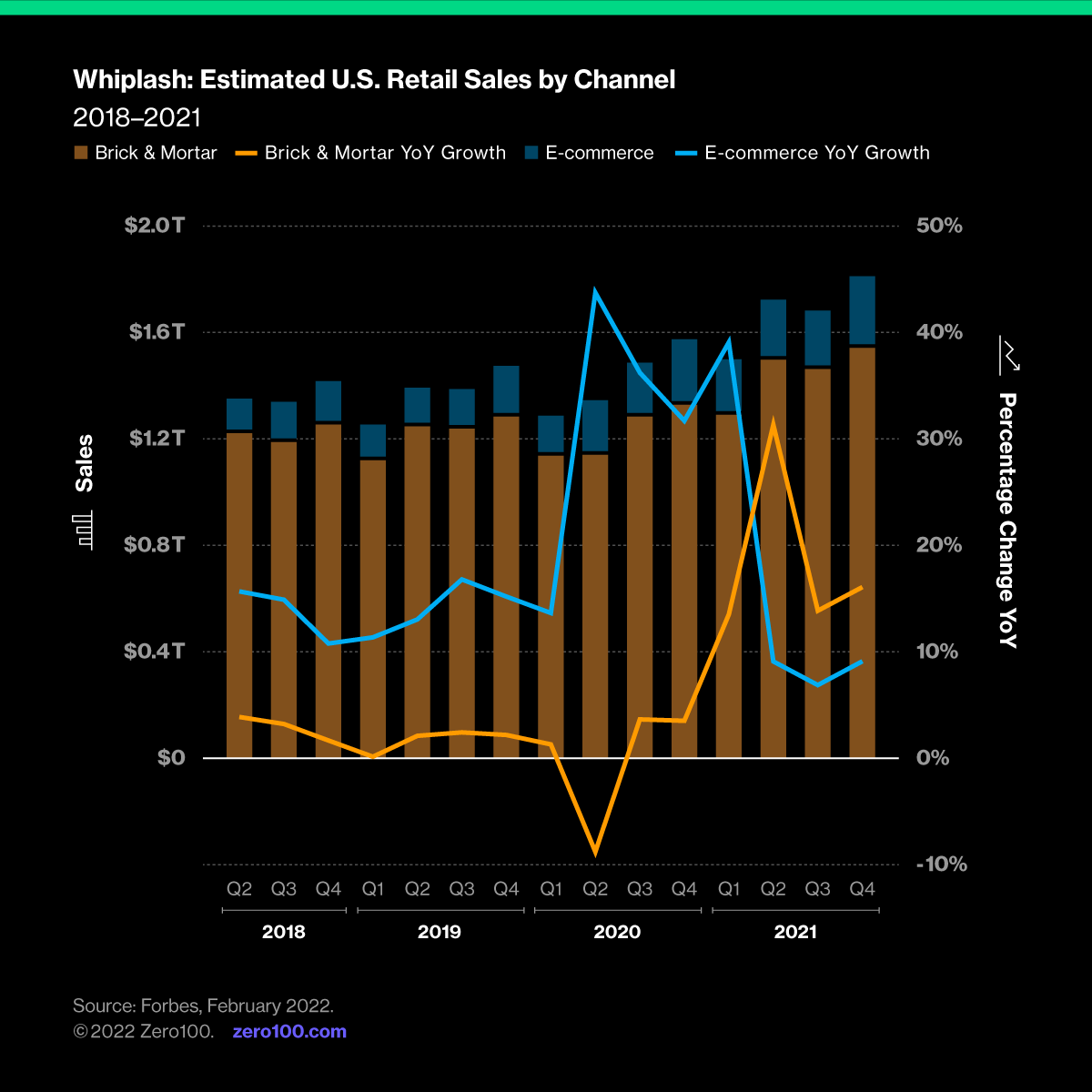
Supply Chain Planning Gets a Post-Pandemic Makeover
S&OP and IBP have added billions of dollars in shareholder value over their 20+ year span. In this next volatile era, the spoils of regenerative business planning (RBP) are likely to be equally immense.
Supply Chain Planning Gets a Post-Pandemic Makeover
March 1, 2020 (8AM)
The chief demand planner for a $5B consumer division of a global electronics giant races to finish the March update to the company’s rolling 12-month forecast. As always, the choice is between +3% at the low end, and +6% on the high. Armed with ten years of category business experience and a leading-edge statistical planning tool at her fingertips, she clicks on “+4.”
What could go wrong?
Just ask $6B spice maker McCormick & Company (3-year stock price down -2% vs. S&P 500 +31%), $29B biopharma giant GSK (stock down -15% over same period), $12B US home goods e-tailer Wayfair (down -91%). Despite herculean efforts to get ahead of the change unleashed by a global pandemic, each continues to miss the mark.
The problem of course is not a lack of smarts. Each of these companies has sharp planners and great systems. The issue is adaptation relative to the rate of change itself.
Thanks to $4T in U.S. fiscal stimulus, war in Ukraine, inflation that broke all Federal Reserve forecast models, attitudinal shifts in the global workforce, de facto U.S.-China cold war, newly imminent EU Green Deal carbon disclosure requirements, and now potential global financial contagion from a Silicon Valley Bank meltdown, the list of “known unknowns” keeps growing. No planner could ever predict these black swan events. But there’s emergent evidence of sustained advantage for those who make a better attempt.

Fortunately, the available playbooks around risk and adaptation are broadly prevalent thanks to planning innovators like Cisco, Apple, and Schneider Electric. The sophistication of the discipline aligns broadly to three successive waves:
-
1
Operations planning started in the early 1990s as a method for optimizing factory capacity.
-
2
By the mid-1990s, pioneers like Honeywell and Procter & Gamble added a cross-functional multi-time-horizon element called Sales & Operations Planning (S&OP).
-
3
The problem, as we now see, is that risk is pervasive and amplifying. It’s no longer enough to align smart people around a statistically generated forecast.
What’s exciting is that the planning profession may be on the cusp of a 4th wave breakthrough, fundamentally more responsive, resilient, and responsible.
Talkin’ ‘Bout My Regeneration
The details are still emergent, but what we’re seeing from planning path breakers like Apple and HP is an embrace of change rather than any attempt to optimize around it. If IBP was about integration, the defining quality in Wave 4 is regeneration: a systemic ability to renew insights, profit, and planet.
Six digitally powered, human-centered capability vectors are under development among these planning innovators to make this new wave different:
- De-averaging with tuned stochastics: Using business segmentation, backed by fit-for-purpose probabilistic forecasting tools to model the unique demand-supply patterns in each product-market segment. Takeaway: Treat averages like cake: easy to consume, but empty calories.
- Real options via simulation: Simulating what-if scenarios with range plans and digital twins to serve up dollarized realistic options so that the tradeoffs are clear, so that choices can be made in real time during executive IBP review. Takeaway: In the face of extreme uncertainty, assume even the most analytically sophisticated forecast is wrong. Under these conditions, scenarios enable more informed bets, leveraging the combined power of machine insights and human intuition.
- Multi-echelon connectivity via cloud and modular data: Leveraging cloud-based solutions and modular data architectures to unlock visibility to cash, customers, and carbon across more functions, more tiers in the supply-demand chain, more time horizons, and more options, quickly. Takeaway: Risk and value creation increasingly sits outside the four walls of the enterprise. Bring it in.
- Auto-improvement with AI and ML: Leveraging AI and machine learning to continuously improve and regenerate models of today’s reality and tomorrow’s possibility. Takeaway: Hire smart people to train the learning machine.
- DfR (Design for Regeneration): Incorporating carbon targets and carbon cost-benefit metrics in system configuration. Also, allowing evaluation of supply options in terms of recurrent revenue versus standalone purchases. Takeaway: Millennial and Gen-Z talent prioritize purpose. And lifetime value is the better profit predictor. Configure planning processes for both.
- People at the center: Complementing plan productivity metrics with HR intangibles, e.g., quality of executive sponsorship, planner career acceleration, and engagement with the systems we deploy. Takeaway: Walking the talk of planning transformation, obsessing the details of career path execution, and over-investing in user-centered design.
S&OP and IBP have added billions of dollars in shareholder value over their 20+ year span. In this next volatile era, the spoils of regenerative business planning (RBP) are likely to be equally immense. A natural first step would be to run pilots along on one of these six dimensions. Experiment to learn and make room for those exceptional planners most hungry to ride the wave.